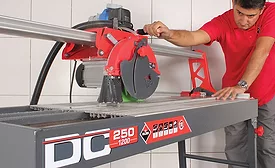Installation How-To
Technical Focus: Dispelling myths about poured gypsum floors
Dispelling common myths associated with poured gypsum floors Learning the facts about gypsum products will place it among the viable options when selecting a proper underlayment for a tiled surface
May 1, 2017
Tile Saws
Six reasons for using a bridge tile saw
Choosing the right tile saw for the job plays a significant factor in completing a successful installation
May 13, 2016
Copyright ©2025. All Rights Reserved BNP Media.
Design, CMS, Hosting & Web Development :: ePublishing












